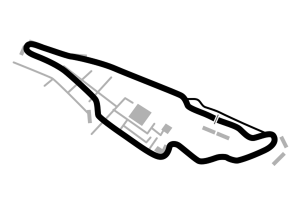The 105th running of the Indianapolis 500 takes place this Sunday with a limited number of fans allowed at the race after last year's closed-door event.
IndyCar veteran and six-time series champion Scott Dixon lines up on pole alongside young stars Colton Herta and Rinus Veekay after last weekend's qualifying
Juan Pablo Montoya lines up 24th for Arrow McLaren SP as the Colombian looks to add a third Indy 500 to his CV.
Here is a beginners guide with everything you need to know to enjoy the so-called “greatest spectacle in racing”.
The Race
The Indy 500 is the race to win in America. So much so, drivers and teams will solely enter this race in a season. 33 cars will line up on Sunday to tackle the 2.5-mile superspeedway over 200 laps, a total distance of 500 miles.
Everything about the race, from the build-up to the post-race, to the race itself, is all about the excitement. Remember the driver introductions at the Circuit of the Americas for the United States Grand Prix in 2017? That happens every year at Indy. Row-by-Row, the drivers take to a specially built plinth as they make their way towards pit-road to enter their vehicles.
There is usually a big military presence with the usual scheduling around Memorial Day, along with big parades down the home straight and amazing renditions of the national anthems.
Even starting the race is a spectacle. Every year, a well-known celebrity is invited to be the honorary starter and allows them to wave the green flag to start the race. 2019, for example, the role was given to Christian Bale and Matt Damon.
At Indy, the drivers take the start in a three-wide rolling formation. This is the only race they even attempt to do such a thing and it truly is one of the best spectacles in racing as the whole field shuffle their way towards the first of four turns.
The drivers tend to try to settle into a rhythm over the first half of the race, with cautions being major game-changers. A caution is a yellow flag, but unlike in F1, any yellow flag will bring out the pace (safety) car. This is due to the high-speeds involved with running on a superspeedway.
With that in mind, expect to see plenty of full-field pit-stops during caution periods, as due to the length of the track, a green-flag stop can put a driver a lap down if a caution is thrown before others follow suit. There are usually six-or-more stops during the race, with the choice of Red or Black Firestone tyre compounds. Red is the racier tyre, whilst Black will give you less wear and a longer stint.
Obviously, like in F1, the pace car will back the pack up and eliminate any advantage the leader may have. So don’t expect massive gaps between first and second on the road. In fact, you may see the drivers work together - even if they are not team-mates. Fuel strategy is absolutely key in a category where refuelling is allowed, and with the cars running at full throttle for most of the race, a slipstream can increase your stint length by between one and four laps.
Something that may sound confusing as a newcomer to the race is where a driver attempts to not lead going onto the final lap. This is due to the massive slipstream effect at Indianapolis. With the likelihood of a late-in-the-race caution, being second and then making your move for the win on the final lap is usually a good strategy.
Whoever comes out on top will have their name - and face - immortalised on the Borg-Warner Trophy.
Oh, Champagne? Who needs that? At Indy, the winner receives a bottle of milk in ‘victory lane’. They even get to choose what type of milk. This year, Montoya has given his preference as chocolate milk whilst back in the day, Emerson Fittipaldi chose Orange Juice - the best kind of milk!
Who to watch out for?
There are a few ex-F1 drivers aiming to drink the milk this coming Sunday. Takuma Sato is aiming to make it back-to-back wins for Rahal Letterman Lanigan Racing and his third in the event overall. He starts 15th this year.
Another previous winner is Alexander Rossi, who came so close to taking a second 500 in 2019. He will start 10th for Andretti Autosport.
As stated previously, Montoya is back for another crack at a race he has won twice, although his life will be tough from 24th for Arrow McLaren SP, whilst Max Chilton will start 29th on the grid for Carlin.
Marcus Ericsson looks to be reborn after moving to the series. He will start 9th for Chip Ganassi Racing, with a great race-car underneath him and a good chance at taking the flag on Sunday.
Former Toro Rosso driver Sebastian Bourdais will start 27th whilst Pietro Fittipaldi, who stood in for Romain Grosjean at the end of the 2020 F1 season, lines up 13th.
Some drivers may be recognisable from Formula 2, Formula 3 and their predecessors GP2 and GP3. Josef Newgarden is a two-time series champion in IndyCar, searching for his first victory at the brickyard. He is racing for one of, if not the best team in the field - Penske.
Felix Rosenqvist has looked fast ever since he joined the series, and will line up 14th for Arrow McLaren SP. Santino Ferrucci is also involved, as is Conor Daly who will start just inside the top 20.
Arrow McLaren SP's second regular will be up for a shot at victory. Watch out for Pato O’Ward, winner at Texas Motor Speedway in the build-up to Indy, who starts from 12th.
Related






 GP AUSTRALIA
14 - 14 Mar
GP AUSTRALIA
14 - 14 Mar

 GP CHINA
21 - 21 Mar
GP CHINA
21 - 21 Mar

 GP JAPAN
4 - 4 Apr
GP JAPAN
4 - 4 Apr

 GP BAHRAIN
11 - 11 Apr
GP BAHRAIN
11 - 11 Apr

 GP SAUDI ARABIA
18 - 18 Apr
GP SAUDI ARABIA
18 - 18 Apr

 GP USA
2 - 2 May
GP USA
2 - 2 May

 GP ITALY
16 - 16 May
GP ITALY
16 - 16 May

 GP MONACO
23 - 23 May
GP MONACO
23 - 23 May

 GP SPAIN
30 - 30 May
GP SPAIN
30 - 30 May

 GP CANADA
13 - 13 Jun
GP CANADA
13 - 13 Jun


























 Grand Prix of Austria 2025
Grand Prix of Austria 2025  Grand Prix of Belgium 2025
Grand Prix of Belgium 2025  Grand Prix of Hungary 2025
Grand Prix of Hungary 2025  Grand Prix of Azerbaijan 2025
Grand Prix of Azerbaijan 2025  Grand Prix of Singapore 2025
Grand Prix of Singapore 2025  Gran Premio de la Ciudad de Mexico 2025
Gran Premio de la Ciudad de Mexico 2025  Grande Prêmio de São Paulo 2025
Grande Prêmio de São Paulo 2025  Qatar Grand Prix 2025
Qatar Grand Prix 2025  Grand Prix of Abu Dhabi 2025
Grand Prix of Abu Dhabi 2025 